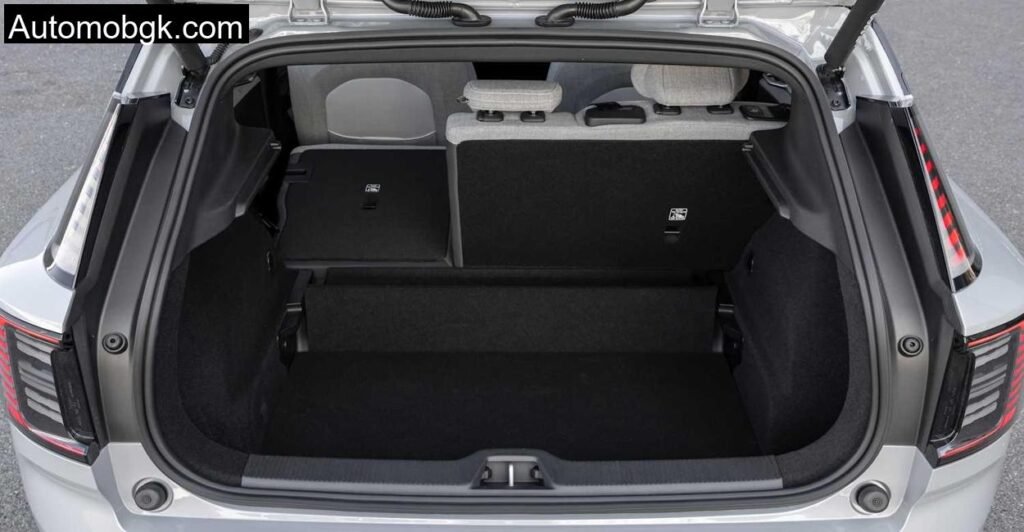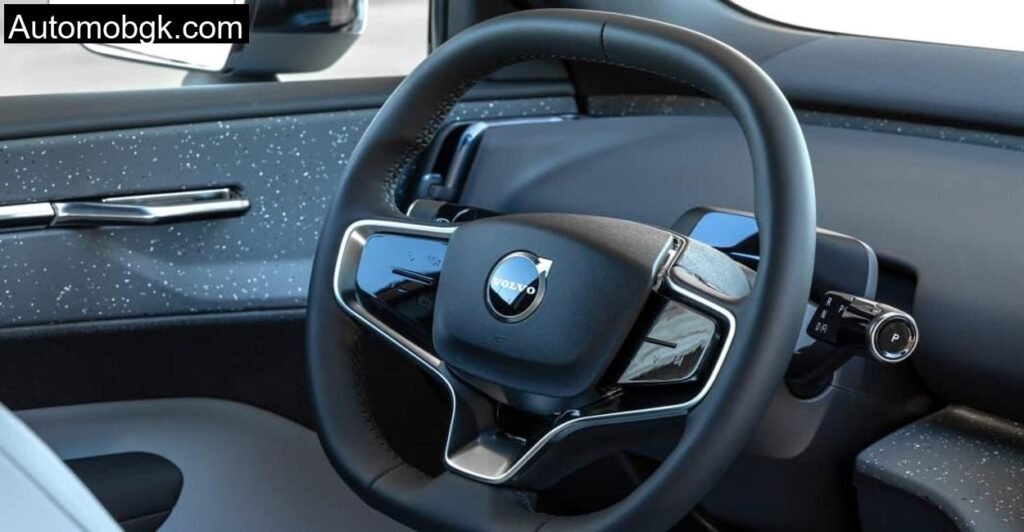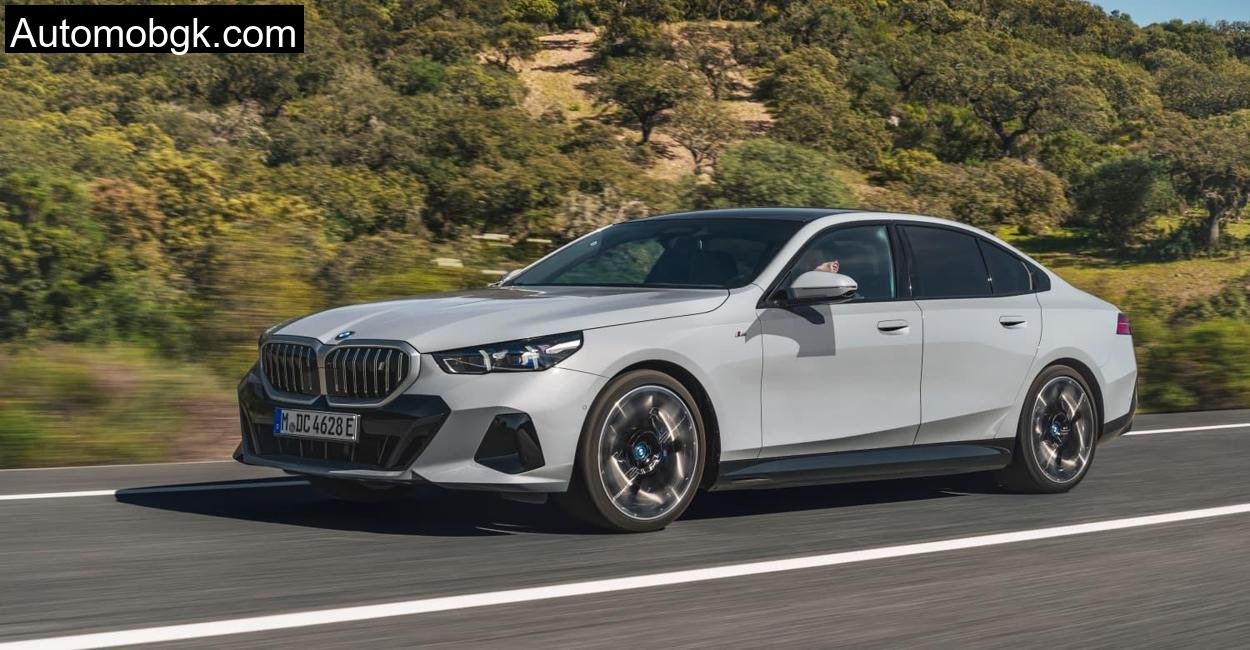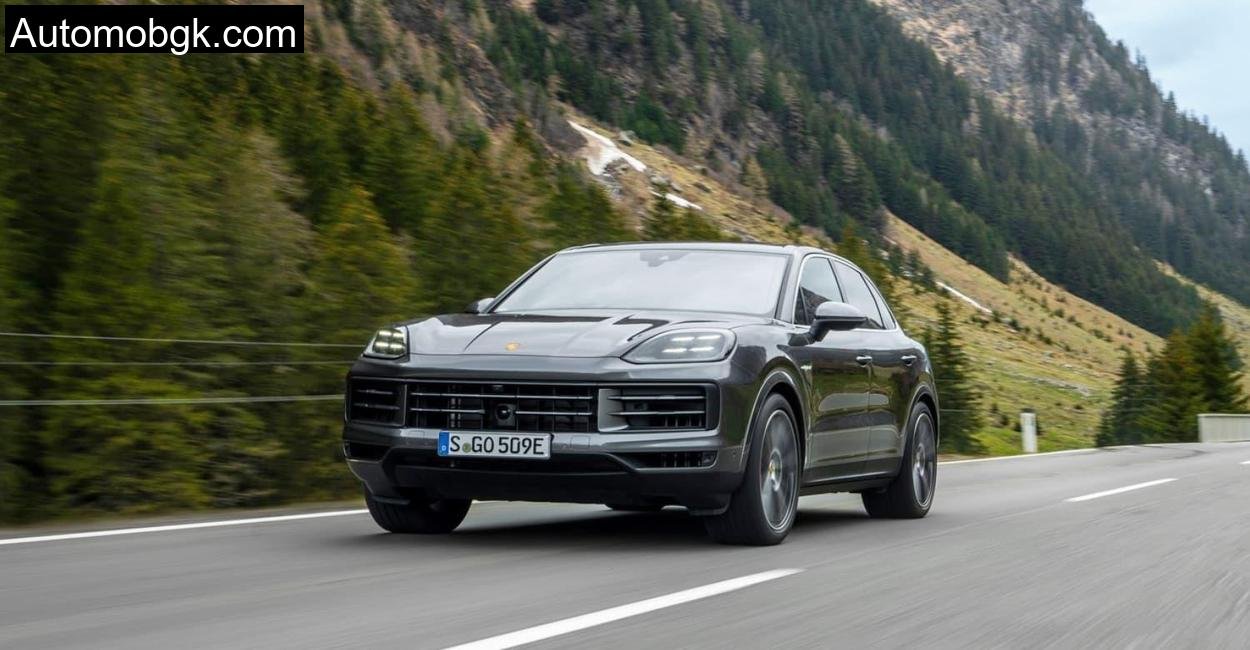The EX30 might be small on the outside, but it doesn’t drive like it has anything to prove. Whether we were carving tight turns near mossy tree roots or accelerating on sharp inclines leading out of the forest, this machine left a lasting impression.
Small Electric SUV with Power
Volvo didn’t just dip its toes into the electric game, they jumped in boots first. The EX30 isn’t some watered-down entry-level EV. Even the rear-wheel drive “Single Motor Extended Range” version packs a punch with 200 kW (272 hp), and it launches with confidence thanks to 343 Nm of torque. In this trim, the EX30 accelerated from 0–100 km/h in just 5.3 seconds during our tests, more than quick enough to leave you grinning when pulling out of corners on narrow, uphill farm roads.
But it was the “Twin Motor Performance” model, equipped with AWD and a ludicrous 315 kW (428 hp, that truly astonished. With 543 Nm of torque under your right foot, this compact SUV feels more like a Scandinavian take on a hot hatch. It surges from 0–100 km/h in just 3.6 seconds, and while that’s impressive, what really matters in real-world use is midrange acceleration, and here it’s relentless. Merging onto the B3 highway from a short ramp near the forest border was effortless. Overtaking? Instantaneous. It’s overpowered, frankly. But who’s complaining?
The Chassis Smooths Out Every Road
No matter how much power a car has, it means little without a well-sorted chassis. Fortunately, Volvo nailed the ride-handling balance with the EX30. On forest trails littered with damp leaves and uneven surfaces, the suspension soaked up imperfections with poise. This is a car tuned for comfort, and it shows in the way it isolates you from poor road surfaces without feeling disconnected or floaty.
The MacPherson strut front and multilink rear setup work in harmony. The car stays composed over crests, and despite some expected body roll in tighter bends, stability never falters. Even when pushing harder through the backroads that snake through the Ellensen hills, the EX30 held its line confidently.
Steering, however, is a mixed bag. The assistance can be adjusted between Light, Medium, and Heavy settings, but feedback is generally lacking. There’s not much feel from the front axle, making precise inputs more of a guess than a connection. Still, for daily driving and relaxed cruising, it’s more than acceptable.
Trunk Space from 320 to 1115 Liters

For a 4.23-meter-long SUV, the EX30 is more practical than expected. Its trunk offers 320 liters of space with the rear seats up and 1115 liters when folded down. That adjustable load floor? A small but genius touch. It lets you raise the cargo floor for a flat load surface, ideal when I packed camera gear and tripods during our test drive setup. One-hand usability made loading hassle-free after a long hike into the woods.
There’s even a small front trunk (“frunk”), though it’s more symbolic than functional, basically just enough space for your AC charging cable. As for interior space, front passengers enjoy generous head and legroom. I’m just over six feet tall, and I never once felt cramped up front.
Rear seat passengers won’t be thrilled, though. The bench is low, making for an awkward knees-up seating position that gets uncomfortable quickly. Adults can manage short trips back there, but this isn’t the SUV you’ll want for chauffeuring tall friends on long journeys.
The EX30’s Operating World Can Be Overwhelming

Here’s where things get complicated. The EX30 ditches a traditional instrument cluster. No driver display, no head-up display, just a single 12.3-inch central touchscreen.
This means even basic info like your speed requires a glance sideways. For a brand that prides itself on safety, it’s a puzzling choice. I found myself frequently glancing to the right, especially while navigating unfamiliar routes through the forest. It was distracting.
The touchscreen interface looks sharp and runs Google’s software suite, including Maps, Assistant, and the Play Store, but the logic behind it needs work. Some functions, like adjusting the exterior mirrors, are buried in menus. Others appear in dynamic bars that change based on context, which sounds clever until you’re hunting for something mid-drive. A seminar might actually help you understand all of it.
That said, the voice control via Google Assistant helps compensate. You can ask it to set climate controls or route destinations while keeping your eyes on the road. The infotainment system also supports Spotify, YouTube, and even Amazon Prime Video, but only while parked, of course.
Up to 157 kW Charging Power at DC Columns
Charging performance is where the EX30 flexes again. Using a DC fast charger, our AWD test model peaked at 157 kW and held a solid average of 111 kW, enough to get from 10 to 80 percent in just 29 minutes.
The onboard navigation automatically plans charging stops, preconditioning the battery en route for optimal charge speeds. However, there’s no manual preconditioning option, which could be a letdown for more EV-savvy drivers.
AC charging tops out at 11 kW in the base model and 22 kW in higher trims, and every EX30 comes with a Type 2 charging cable stored in that tiny frunk. Vehicle-to-grid (V2G) functionality is absent for now, which Volvo seems to be saving for larger models like the EX90.
Technical Specification
| Specification | Details |
| Power Output | 315 kW (428 hp) |
| Torque | 543 Nm |
| Drive Type | All-Wheel Drive (AWD) |
| Battery Capacity (Net) | 69 kWh |
| WLTP Range | Up to 450 km |
| Real-World Range | Approx. 330 km |
| Acceleration (0–100 km/h) | 3.6 seconds |
| Top Speed | 180 km/h (electronically limited) |
| DC Charging Power (Max) | 157 kW |
| DC Charging Time (10–80%) | Approx. 29 minutes |
| AC Charging Power (Max) | 22 kW (3-phase) |
| Charging Port Type | CCS (Combined Charging System) |
| Onboard Charger | 22 kW |
| Vehicle Length | 4.23 meters |
| Towing Capacity (Braked) | 1600 kg |
| Trunk Space (Standard) | 320 liters |
| Trunk Space (Max) | 1115 liters |
| Platform | SEA (Sustainable Experience Architecture) |
Conclusion
The Volvo EX30 is a compact SUV that refuses to play by the rules of its class. It’s powerful, well-equipped, and thoughtfully engineered, yet not without its quirks. From the forested paths around Ellensen to the autobahn outside Göttingen, it proved capable in every scenario we threw at it.
Its powertrain is a standout; the RWD model is more than enough for most, and the AWD version borders on excessive. The chassis is calm and composed. The infotainment system? Overcomplicated. And the decision to skip a driver display still baffles.
But when viewed as a whole, the EX30 represents strong value. It’s practical, good-looking, and fun to drive. If Volvo can fine-tune the interface and rethink a few interior decisions, this could easily be the benchmark small electric SUV for years to come.
Is the Volvo EX30 good for long trips?
Yes and no. It has solid real-world range and fast DC charging, making it road-trip-friendly. But rear seat comfort for adults and the lack of a driver display may bother some on longer journeys.
Is the rear-wheel drive EX30 powerful enough?
Absolutely. With 272 hp and a sub-6-second 0–100 km/h time, it delivers confident acceleration in all scenarios.
How practical is the Volvo EX30 for daily use?
Very. It has a spacious trunk, user-friendly front cabin, and a calm ride. Just prepare for a learning curve with the tech.







